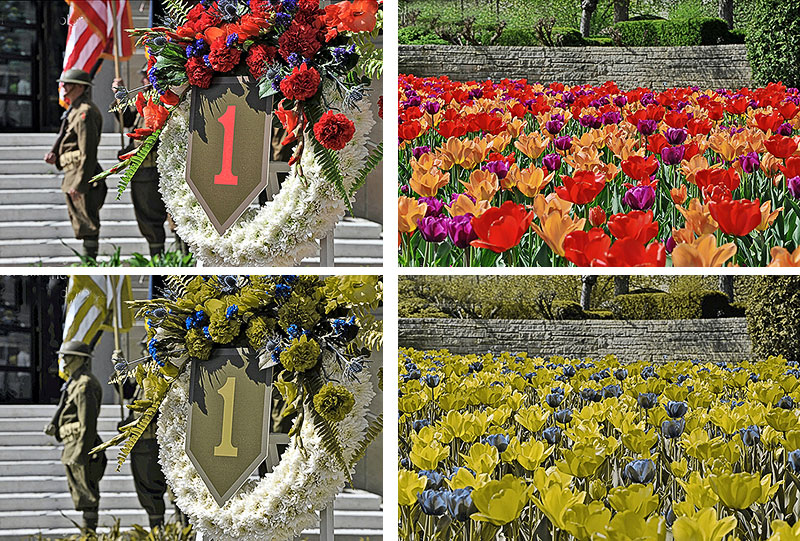True Colors
By Mark Loehrke
Appears in the June 2023 issue.
New technology helps color-blind visitors at Cantigny

Aside from climbing temps, one of the most reinvigorating things about spring and summer is the palette shift from the drab winter whites and grays to vibrant greens, reds, oranges, blues, and purples. For those with colorblindness, however, the magnificence of this annual transformation is muted at best, if not entirely absent—a situation that Cantigny Park in Wheaton is trying to remedy.
For the third straight year, Cantigny is offering visitors the opportunity to borrow a pair of EnChroma glasses to more fully experience the park’s lush gardens now that they’ve burst into vivid life. The glasses, which look like sunglasses, enable colorblind people (about one in 12 men and one in 200 women worldwide, according to EnChroma) to experience an expanded range of colors, as well as enhanced vibrancy, clarity, and differentiation.
“We’re always looking for ways to make Cantigny more accessible for visitors, and this was one more step,” says senior manager of communications Jeff Reiter, noting that the free eyewear has been used by more than 100 visitors since it was introduced in April 2021.

Most of those guests tend to head straight for the park’s teeming gardens, which are renowned for their brilliant displays of color and, thus, an ideal testing ground for the technology. Among those who have used the eyewear, Cantigny information specialist Amanda Goossens says feedback has varied, with some visitors noticing a major difference and others seeing little or no change. For many of those in the former camp, however, Goossens says the reactions have been inspiring. “Some people are in tears, amazed at the fact that they can now see colors they never knew existed before,” she explains. “They usually will ask to see the label on the boxes in the hopes of purchasing glasses for themselves.”
For people with normal color vision, white light (which is actually a full spectrum of colors) enters the eye and activates three types of photopigments, one in each of the three photoreceptors sensitive to different parts of the visible spectrum: blue, green, and red. In contrast, many people who are colorblind have an excessive overlap of the green and red color cones in their eyes, causing specific hues to become indistinguishable and reducing the number of shades they see by as much as 90 percent. EnChroma’s optical lens technology selectively filters out wavelengths of light at the point where this overlap of color sensitivity occurs, increasing the contrast between the red and green color signals and reducing the symptoms of colorblindness.
While Reiter says the program is not a major initiative for Cantigny, he is gratified to hear comments like those Goossens recounts. The goal, after all, is to make sure as many people as possible can enjoy the park in all of its picturesque glory—a sentiment that is echoed by Magan Ascher, director of visitor services: “Colorblind visitors deserve to experience the art and surrounding gardens in the brilliant colors that most of us take for granted.”
The eyewear is available to borrow at Cantigny for no charge on a first-come, first-served basis, but a $75 deposit is required. Glasses are available in multiple sizes and can be reserved by calling 630-260-8263 or emailing seecolor@cantigny.org at least 48 hours in advance.
Photos: Cantigny Park


